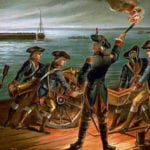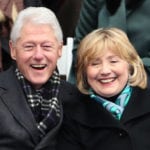 Weird Stuff
Weird Stuff  Weird Stuff
Weird Stuff  Humans
Humans The Ten Most Lethal Gunslingers of the Old West
 Misconceptions
Misconceptions 10 Phony Myths and Urban Legends That Just Won’t Die
 History
History 10 Amazing Roman Epitaphs
 Weird Stuff
Weird Stuff 10 Niche Subcultures That Are More Popular Than You Might Think
 Mysteries
Mysteries 10 Tragic Disappearances and Deaths in Joshua Tree National Park
 History
History 10 Ways Childhood Really Sucked in the Old West
 Music
Music 10 Name Origins of Famous Bands from the 1990s
 Religion
Religion 10 Biggest Turnarounds by the Catholic Church
 Weird Stuff
Weird Stuff 10 Unbelievable Times Laws Had Unintended Consequences
 Weird Stuff
Weird Stuff 10 Cool and Creepy Facts about Collecting Tears
 Humans
Humans The Ten Most Lethal Gunslingers of the Old West
 Misconceptions
Misconceptions 10 Phony Myths and Urban Legends That Just Won’t Die
Who's Behind Listverse?

Jamie Frater
Head Editor
Jamie founded Listverse due to an insatiable desire to share fascinating, obscure, and bizarre facts. He has been a guest speaker on numerous national radio and television stations and is a five time published author.
More About Us History
History 10 Amazing Roman Epitaphs
 Weird Stuff
Weird Stuff 10 Niche Subcultures That Are More Popular Than You Might Think
 Mysteries
Mysteries 10 Tragic Disappearances and Deaths in Joshua Tree National Park
 History
History 10 Ways Childhood Really Sucked in the Old West
 Music
Music 10 Name Origins of Famous Bands from the 1990s
 Religion
Religion 10 Biggest Turnarounds by the Catholic Church
 Weird Stuff
Weird Stuff 10 Unbelievable Times Laws Had Unintended Consequences
10 Conspiracy Theories That Helped Shape American History
There’s something about human nature that just loves a good conspiracy theory. We can’t help being drawn into the secrets and hearsay. Sometimes, though, conspiracy theories carry so much influence that they shape history. The history of the United States is riddled with conspiracies, from the founding of the country to the Civil Rights Movement and beyond.
10 The Death Of President Zachary Taylor
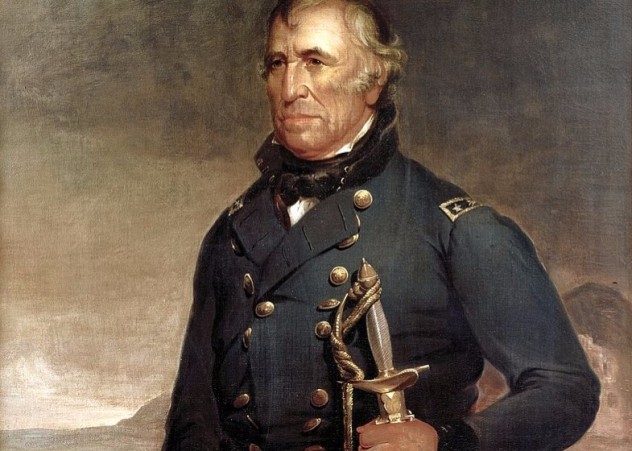
Sixteen months into his first term as president, Zachary Taylor suddenly took ill and died. His death is usually blamed on a batch of bad cherries and some spoiled milk, but this was also on the cusp of the Civil War, making the event a perfect target for conspiracy theorists.
Taylor’s stance on slavery was ambiguous. Although he owned slaves himself and favored westward expansion and war with Mexico, he didn’t support the idea of expanding the right to own slaves into the west. This was obviously a problem to those with an agenda to preserve and spread slavery.
While that alone would raise the eyebrows of any conspiracy theorist, there’s more—the many similarities between Taylor’s illness and the symptoms of arsenic poisoning.
Some members of the nascent Republican Party, which held a stance against slavery, were certain that Taylor’s death wasn’t an accident. They were also suspicious that there would be other targets—Andrew Jackson, James Buchanan, and William Henry Harrison. On the eve of Lincoln’s election, they believed that whoever poisoned Taylor would go after him, too, and Lincoln was swamped with letters warning him to be careful with his food. After Lincoln was assassinated, speeches referred to Taylor’s death with the implication that Lincoln’s murder was just another step in the conspiracy theory.
The Baltimore Sun even went so far as to name names. According to reports that ran a few days after Taylor’s death, future Confederate vice president Alexander Hamilton Stephens and Georgia congressman Robert Toombs showed up in Taylor’s sick room with threats of censure should he not vote the right way. The pro-slavery South was at the head of a building conspiracy. Even though Taylor wasn’t outright anti-slavery, he was trying to keep it from spreading—and that was clearly unacceptable.
9 Samuel Morse’s Foreign Conspiracies
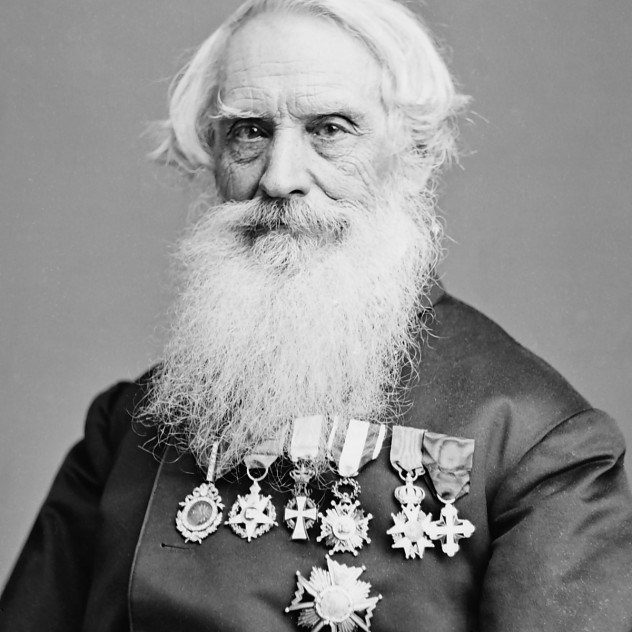
Samuel Morse gained his fame through his invention of Morse code, but he was also an avid conspiracy theorist who wrote volumes about the immigrants and Catholics who were coming to America with the obvious intention of taking over. His hate speech was written largely under the pen name “Brutus,” and it was published in the New York Observer, which was conveniently owned by his brother.
The son of a preacher, Morse had a staunch opinion of how the American public should identify and behave: Protestant. His anti-Catholic writing started when he was teaching at New York University after an incident in Rome. He was hit by one of the Pope’s Swiss Guard for not taking off his hat as the Pope passed by.
According to Morse, there was a foreign conspiracy targeting America and its downfall. Austria in particular was plotting to destroy the United States, acting at the behest of their government and through an organization called the St. Leopold Foundation. Pope Gregory XVI was a despot and the enemy of liberty, the Jesuits were working from the inside while retaining their ties to Austria, and Catholicism was getting closer and closer to its end goal by enforcing some serious mob rule. Danger was imminent, and the Pope needed to be stopped. It was up to the Protestant community to protect everything that America stood for.
Morse ran for mayor of New York City in 1835, but he was absolutely not prepared for the cutthroat world of politics. He lost. His views remained popular, though, and his Nativist Party turned into the Know-Nothing Party, which continued to spread anti-Catholic, anti-immigration hate.
8 The 1741 Slave Conspiracy
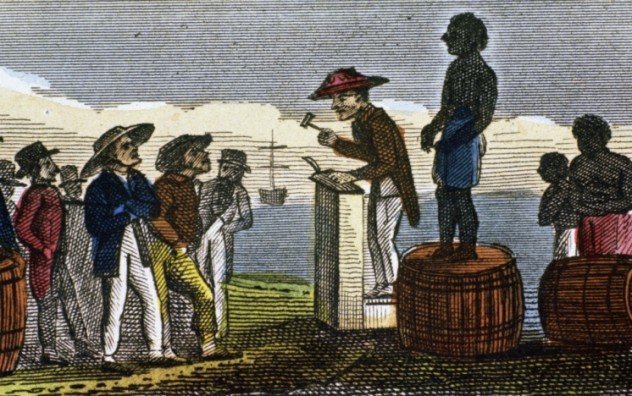
In 1741, about 20 percent of the population of Manhattan was slaves, and slaveholders had concerns about the increasing opposition and inevitable conflict. In March and April, 13 fires broke out across the city. The fires reached the lieutenant governor’s mansion, another home, a dockside warehouse, and even a cow barn.
The first three fires each happened on a Wednesday, three weeks in a row. After that, the frequency picked up. When suspicion fell on a man who had been seized by English forces and auctioned into slavery, word spread through the city even faster than the fires.
The city was at the mercy of a massive movement by slaves to rise up in revolt, and they were starting with arson. When another slave was caught running from a burning building, mob mentality quickly took over.
A trial convened at City Hall. The jury included some strongly biased participants, like the owner of one of the warehouses that had been torched. Mary Burton, a 16-year-old tavern girl, spun a tale of the slave conspiracy, claiming that she had overheard two slaves meeting with an Irish prostitute. They talked about burning the city to the ground, she claimed, and then discussed who was going to be king once they were in charge.
The Irish prostitute, Peggy Kerry, soon confessed that the story was absolutely true. After her confession, the first two slaves named in the conspiracy theory were hanged. After that, fingers couldn’t be pointed fast enough. More men were burned at the stake. The prostitute and her associates were accused of aiding in the conspiracy and running a stolen goods racket as well. They, too, were hanged.
The witch hunt ended in September. On September 24, there was a citywide celebration of the end of the fires and the trials.
7 Henry Ford’s Jewish Conspiracy
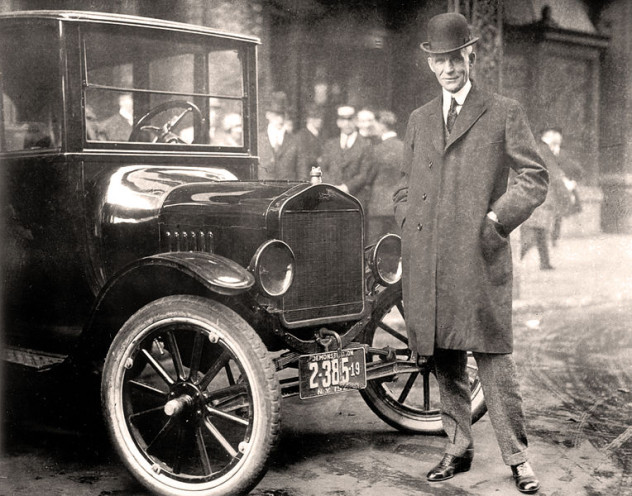
In 1918, Henry Ford bought the Dearborn Independent. Within a few years, he was using the newspaper as his own platform to run a series of articles outlining what he believed was a vast Jewish conspiracy.
Ford hated a lot of things, like immigrants from Eastern Europe, parents who sent their children to daycare outside of the home, and new fashion trends. But what he hated the most was the idea that there was a conspiracy among the Jews to control all the corners of the world. He was convinced that he was being targeted by Jewish car manufacturers who were undercutting his prices and that the idea of the national debt was a front used to keep the public beholden to Jewish banking corporations. The Federal Reserve was also a part of the plot, according to Ford. This was a war that Christians could not win because of the innate ethnic advantage the Jews had when it came to financial know-how.
Once he got a hold of The Protocols of the Elders of Zion, a hoax that confirmed his suspicions, Ford’s campaign against the Jews gained momentum. He used his newspaper to bring all of the plans for world domination in the manifesto to the public eye. Ford eventually found out that the book was a hoax, but that didn’t dissuade him from his cause.
Finally, Ford was sued for libel, but he was involved in a car accident that prevented him from testifying. Even after he settled the matter out of court, the angry American public called for a boycott of his cars. He apologized, but that didn’t stop him from later claiming that the conspiracy continued and that the Jews had orchestrated World War II.
6 The Slave Power Conspiracy
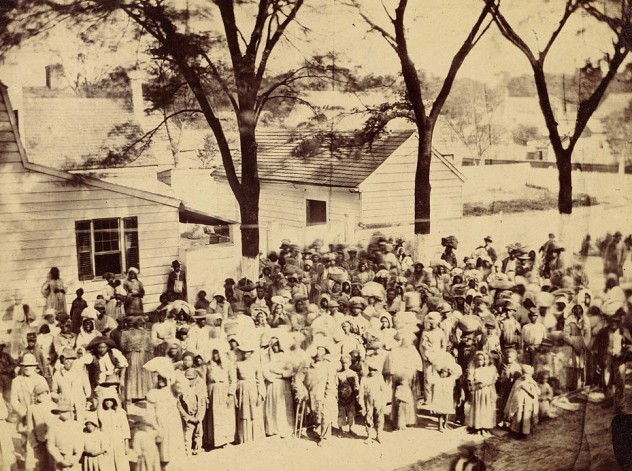
According to abolitionists, there was a secret Southern society in the years leading up to the Civil War—a proportionately small number of people with massive influence over both state and federal laws. It was a nearly aristocratic society bound by the idea that owning slaves was an absolute right, both legal and moral. Those at the head of the Slave Power Movement allegedly used financial interest and gain to try to sway those who thought owning slaves was immoral.
By 1850, the Slave Power conspiracy was said to have already taken over Congress. Their three primary interests were to reopen the slave trade, make slavery legal and accepted across the country, and to get rid of any opposition to the slaveholders.
The conspiracy wasn’t just about slavery. It was about the financial and capitalist rights of the Southern slave owners. The conspiracy had an incredible impact on the split between the North and the South. It was a terrifying, shadowy secret society that was conspiring to bring the entire country under its control. That meant there was absolutely no possible compromise—not with this shadow society waging war on the very idea of liberty and freedom.
5 The Populist Party’s Gold-Silver Conspiracy

In 1892, a new player showed up at the national convention—the People’s Party, also known as the Populist Party. At its head was Ignatius Donnelly, whom you might remember as one of the guys who insisted that Atlantis was absolutely real. His representation of the Populist Party platform was as full of conspiracy theories as you might expect.
According to Donnelly, the party had been formed just in time because the entire country was in a massive downward spiral. One of the things that he had a major issue with is something that’s still a huge cause for concern and debate today—the labor of many for the wealth of few. Donnelly said that it was unacceptable that there were so few people sitting on such massive amounts of money while everyone else was working their fingers to the bone trying to make ends meet. He said that those in power were making sure that this wouldn’t change, and they were doing it by making gold the standard.
Silver—which he said had been perfectly fine up until then—was being demonetized in favor of gold. When the Populist Party issued their platform statement, they pointed at the recent practice of abusing national power to create money, increasing the power of gold, decreasing the value of property and manual labor, and thereby increasing the amount the average citizen owed to banks and lending companies. With other political parties supposedly agreeing to overlook the practice in a conspiracy to sacrifice the well-being of the many for the financial security of the few, Donnelly made it clear that the Populist Party kept the people in mind.
Industrial America and the working class were becoming absolutely dependent on the wealthy elite, and Donnelly called it “a vast conspiracy against mankind.” Those in power were conspiring to stay in power, struggling with others at the top while stepping on the little guy, he claimed.
The party was incredibly short-lived. By 1896, the party had been absorbed by the Democratic Party, and it lost many of its supporters in the process. Some of the proposed reforms had better luck by finding their way into the New Deal.
4 The American Protective Association

The American Protective Association (APA) was formed with one major goal in mind—preventing Catholics from holding public office. It was founded in Iowa in 1887 in response to the belief that the Roman Catholic Church had a dark agenda that opposed all that America stood for. They had the eyewitnesses to prove it, they said, claiming to have testimonies from former priests who had seen a secret papal bull ordering a massacre of all Protestants during the Feast of Saint Ignatius in 1893. At the forefront of the Church’s anti-American army were the Knights of Columbus, supposedly the part of a campaign to bring America to its knees.
The APA was originally a secret society, allied with the Republicans and formed with the Know-Nothing anti-Catholic decree as the basis of its beliefs. Most of their members were Protestant, and they released tract after tract on the conspiracy to bring down America—tracts that saw a resurgence in popularity when Kennedy was elected. They claimed that half of the country’s public offices were held by Catholics even though only about 12.5 percent of the population was Catholic.
The APA was more than happy to help the dissension along by distributing literature that claimed Pope Leo XIII had issued a doctrine that released Americans from any obligation to their country. This doctrine stated that Catholics were only responsible for their loyalty to their Church. The claims—especially those about the rumored Protestant massacre—were taken very seriously. In addition to citizens arming themselves specifically against the threat of Catholic violence, the mayor of Toledo even called in the National Guard as a precaution against the massacre.
Those who joined the APA swore an oath not to help the expansion of Catholicism in the States, hire Catholics to work for them, or enter into any kind of agreement or contract with a Catholic. They also swore not to support the election of a Catholic and to “wage a continuous warfare against ignorance and fanaticism; [ . . . and to] strike the shackles and chains of blind obedience to the Roman Catholic Church from the hampered and bound.”
3 The Dred Scott Conspiracy
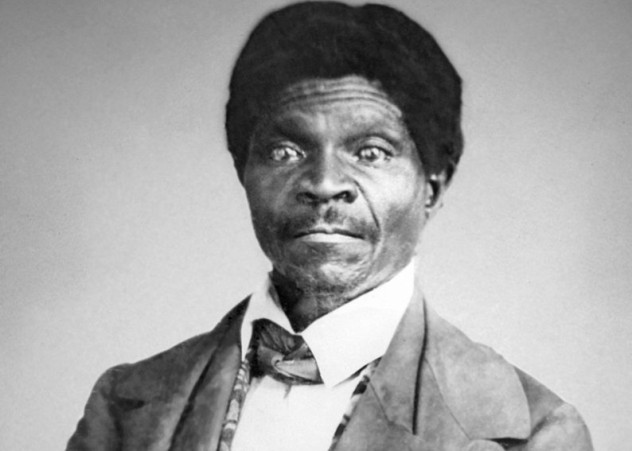
The Dred Scott case was one of the landmark court cases in the history of the United States, ruling that after 11 years of freedom, Scott was still a slave. It was also a huge chapter in the Slave Power conspiracy, and the verdict clarified whose pocket the Supreme Court was in.
The reaction of the North was one of unanimous outrage. Revoking Scott’s freedom was nothing short of spitting on the very idea of freedom and individual rights, and there was only one reason that a group of human beings would come to that decision: They were a part of the Southern conspiracy. If there was any doubt about which side the court was on, they cleared it up with the ruling of this case.
The Dred Scott case added fuel to the incredible tensions between North and South. While some Northern papers took the ruling as a sign that they had already lost ground and that the government had already fallen to the conspirators, others took it as a sure sign that they needed to do what was right and continue to oppose slavery.
The case also came up in the election that would determine the course of American history. While Abraham Lincoln would condemn the decision, he also spoke out against the Kansas-Nebraska Act of 1854, the first victory for the conspirators and a law that had been framed by Stephen Douglas, his opponent. For Lincoln, there was no doubt that the conspiracy was real, and putting his opponent in line with it gained him support from those who were convinced slaveholders wouldn’t stop until they spread slavery across the free world.
2 William Pelley And The Silver Shirts
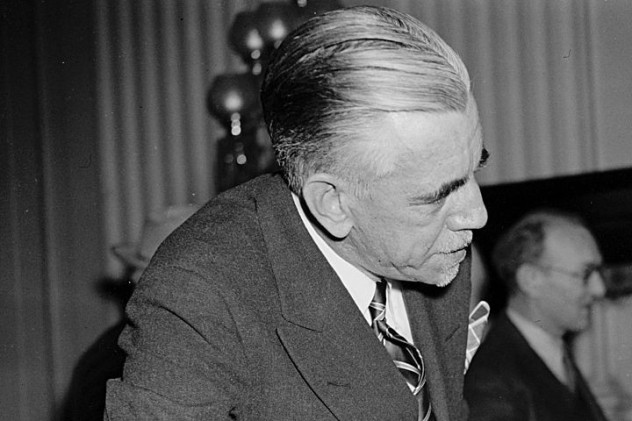
Once a reporter for the Saturday Evening Post and Hollywood horror scriptwriter, William Pelley eventually turned his attention to the real world. When he looked at it, he saw a major conspiracy lurking in the shadows. After spending some time working in Russia, he became convinced that Communism was nothing less than a worldwide conspiracy orchestrated by the Jews and designed to give them control of the world.
Communism, according to Pelley, was a front for a secret group of Jews who were also in league with the Illuminati. When Pelley became active in politics, he took aim at President Roosevelt and claimed that the New Deal was yet another branch of Communism. The Great Depression had been orchestrated to bring America to its knees, but Pelley soon found someone who really understood him: Hitler.
In 1933, the pro-Nazi Pelley organized the Silver Shirts as an American version of Mussolini’s black- and Hitler’s brown-shirted supporters. He believed that the English were the true Israelites, that the Second Coming was imminent (September 17, 2001, according to the pyramids at Giza), and that Christ would finish what Hitler had started. Pelley wanted his Silver Shirts to be right there, too, ready and waiting to help.
By the middle of the 1930s, there were about 15,000 members of the Silver Shirts, but the order was short-lived. Pelley was arrested and indicted on an impressive range of charges, and by the time the war started in earnest, his movement had lost its popularity. Members would go on to spawn their own hate groups, though, ensuring that Pelley’s blind belief in a global Jewish conspiracy would live on.
1 Thomas Jefferson Wanted To End The World
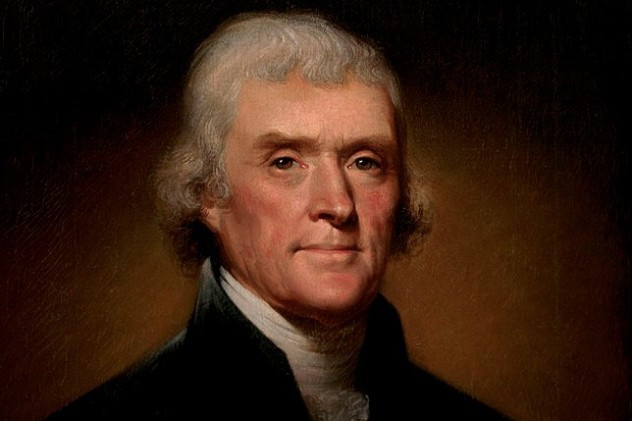
The 1800 presidential election was outrageously vitriolic, and the Federalists threw everything they could at Thomas Jefferson, painting him in the middle of a massive conspiracy that was going to bring down the world’s governments, end Christianity, and put all private property in the hands of a select few.
It was all being orchestrated by the Illuminati. The group that had established its agents in the French court and brought about the French Revolution was looking to do the same thing in America—and they were going to use Jefferson to do it. The Federalists pointed to Jefferson’s close ties to the French and said that he had been secretly recruited by the Illuminati while spending time at the French court. The Illuminati already had a reputation as a shady group of powerful people who were trying to take over the world. Using Jefferson was supposed to play on fears that were already out there—which obviously didn’t work.
Jefferson was also supposed to be a staunch atheist, which doesn’t seem like it would be that big of a deal. But the kind of atheism that went along with the sort of person that would join up with a conspiracy to bring down the known world was a serious sort of atheism. One of the most determined—and graphic—spokesmen of the consequences of a victory for Jefferson was Timothy Dwight, then president of Yale. If Jefferson were to win, Dwight warned, the Bible would be burned. “Murder, robbery, rape, adultery, and incest will be openly taught and practiced, the air will be rent with the cries of distress, the soil will be soaked with blood, the nation black with crimes.”
Needless to say, he won anyway.
